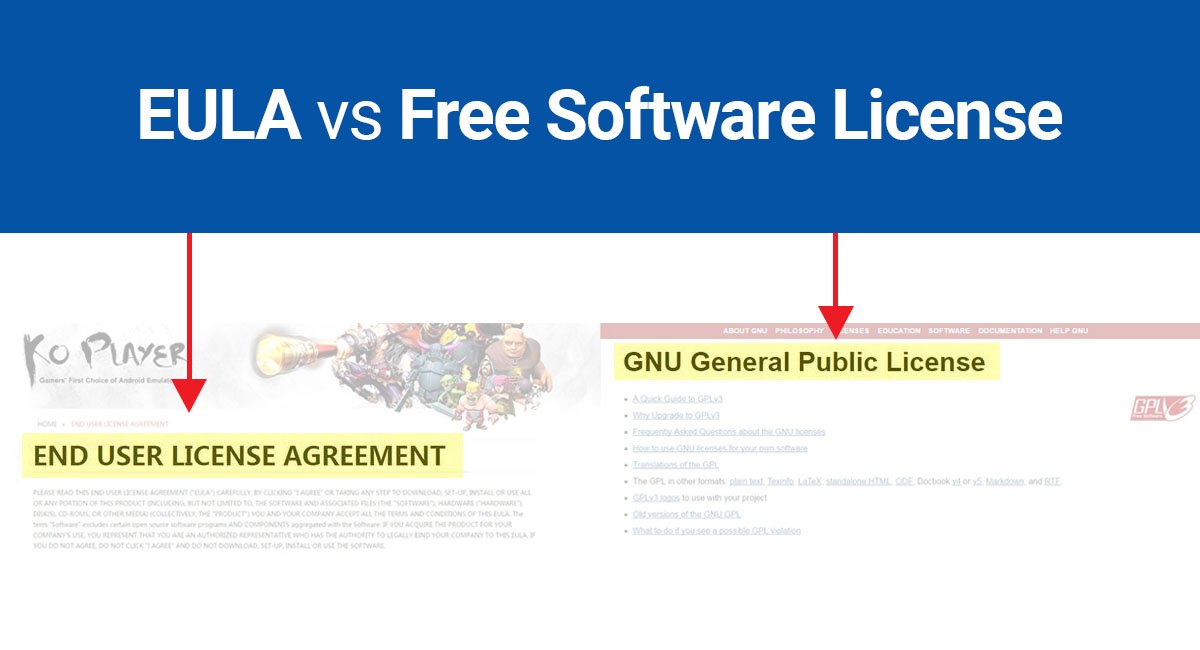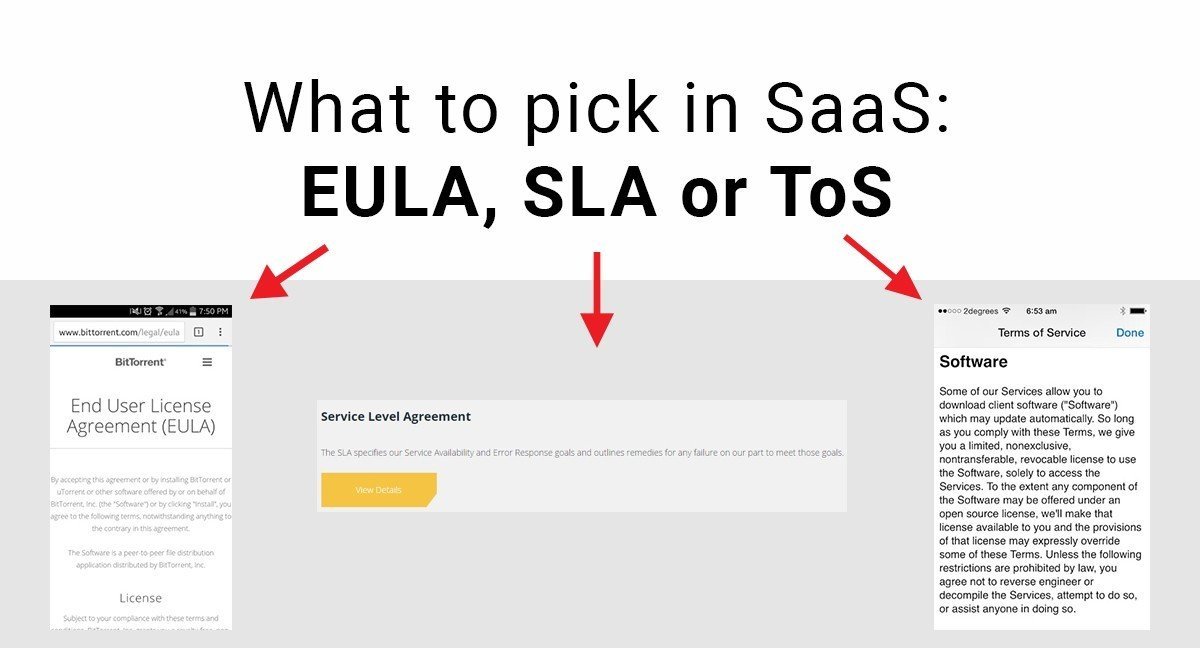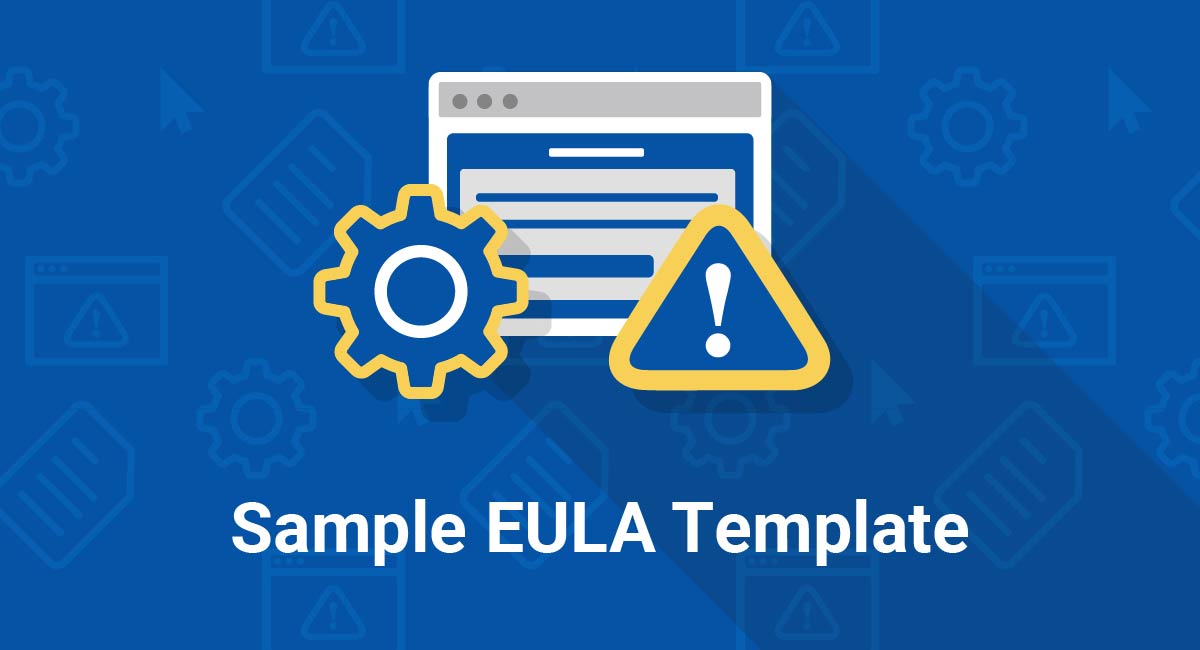Most software available today is licensed, not purchased. Consumers have no shortage of products to consider, and those with good programming skills often choose software with open code so they can add their own features and functionality.
Generally, items with closed code are licensed through End Use License Agreements (EULA) while open code products use one of the many Free Software License forms. These agreement types have vast differences between them because they grant different rights and duties.
Here are the primary differences between EULAs and Free Software Licenses.
Parties to the agreement
The EULA is a contract between a purchaser and a seller that allows the purchaser to use the software. It defines how the software may be used and any relevant limitations.
It is a direct communication that arises in each transaction. Users purchasing or subscribing to the software product must first agree to the EULA terms. This involves clicking an "I agree" button. Often times, it is impossible to access the software unless the user takes the step to agree.
The Free Software License acts as a notice to users and is not a contract. It does not present itself when users access the software and accepting the terms is not required for access. The license is merely a declaration of "I grant you the permission to copy and modify this software" as it grants rights to the user to access, use, modify, and even distribute the product.
Ownership
Almost all software licenses are proprietary, meaning they are distributed for use only, not modification. Users are limited on how many devices can run the software and who can use it. The distributor retains full ownership of the software.
That makes ownership and intellectual property important topics in a EULA. This topic requires its own section and violating these rights can be cause for termination of the licensing agreement.
Parallels Software places this section in its EULA about its copyrights and ownership rights in its products:

Software controlled by a free license may have an owner, but that individual or entity does not retain exclusive rights. Instead they develop a base product that can be changed and redistributed by other people.
However, the agreement will claim copyright ownership. Rather than claim a proprietary interest, it will only insist that the user who makes modifications still refer to the original creator of the source code.
This is often done in the rights granted section rather than in its own section.
Rights granted
Rights under a EULA-licensed software are limited to the user who makes the purchase. They are not allowed to transfer their interests or modify the software.
Depending on the product, the rights may include installation and use limits. For example, some EULAs are considered workstation licenses since they only authorize installation on one device.
If a user is allowed to install the software on multiple devices, that is a concurrent use license. However, there can be other limitations including number of devices and site location.
These limits are often addressed in the EULA as a list.
This example from Piriform CC Cleaner shows a list of what a user is not allowed to do. Since this is a personal product, that includes not installing it for commercial use and never modifying the software:
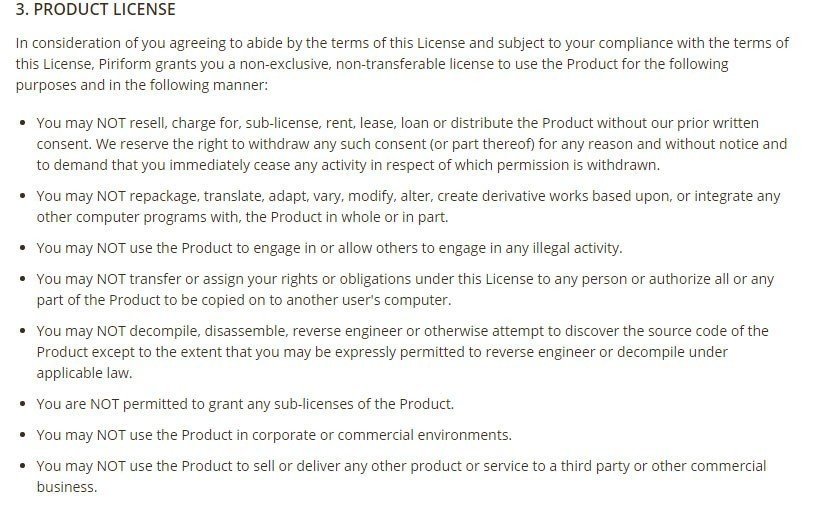
On Free Software Licenses, there are few restrictions. Forms contain a section on basic permissions that indicate wide latitude for users who access the software.
The GNU General Public License is a common licensing form for distributors of open source software. It offers a section that describes the rights of the user and how they retain them:

Another form, the MIT License, places simple expectations on users. Basically, all they need to do is include a copyright statement:

An easy way to distinguishment these agreements is that EULAs often define rights by what users cannot do while the Free Software License focuses on what is possible for users to do.
As long as users are willing to share their products and satisfy other requests, they enjoy wide discretion under the Free Software License. However, this type of discretion is never present in an EULA.
Obligations and duties
Users desiring a license in a proprietary product must give something in exchange. This is normally a licensing fee either paid upfront or through a monthly, annual or quarterly subscription.
Adobe makes it clear that licensing fees are vital for maintaining a license to its software products:

EULAs also allow distributors to terminate licenses. This allows them to enforce the EULA and maintain their rights.
In its standard EULA, Apple explains that failure to comply with the license (which would include nonpayment of fees) results in termination and no further use of the software:

Free software products may impose some duties, but they are not nearly as limiting. In the MIT example above, there is merely the requirement that the user place the required notice on their product. That is normally just a quick copy and paste job that does not limit a user's rights to modify or distribute any new products they produce from the open code.
Acceptance of terms
Because it's a contract, an EULA and its terms must be accepted by users. This is often accomplished through an online dialog where a user must indicate affirmative assent to agree to follow the EULA.
This is often confirmed at installation, like with the Adobe Flash Player here. Unless a user clicks the box saying they read the license agreement, they cannot press the "Install" button:
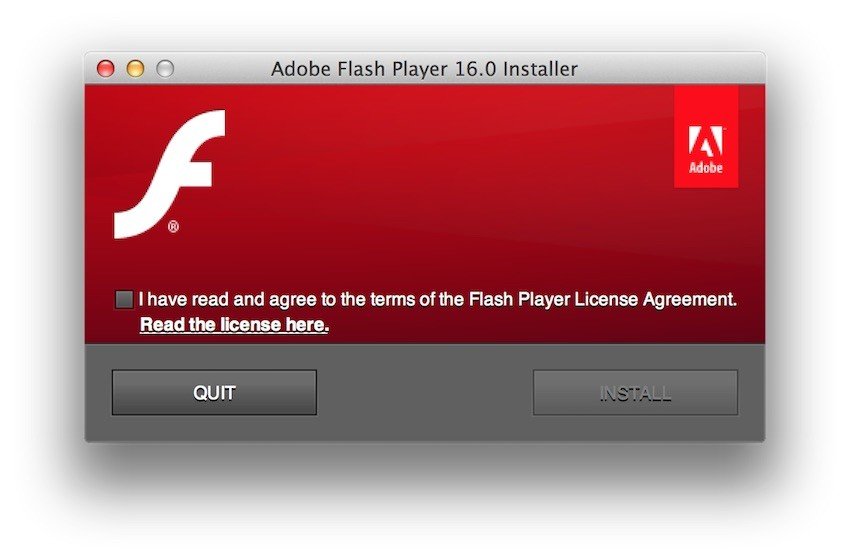
Acceptance can also be required when a user accesses the software or app for the first time.
This example is provided by Chase Mobile Banking:
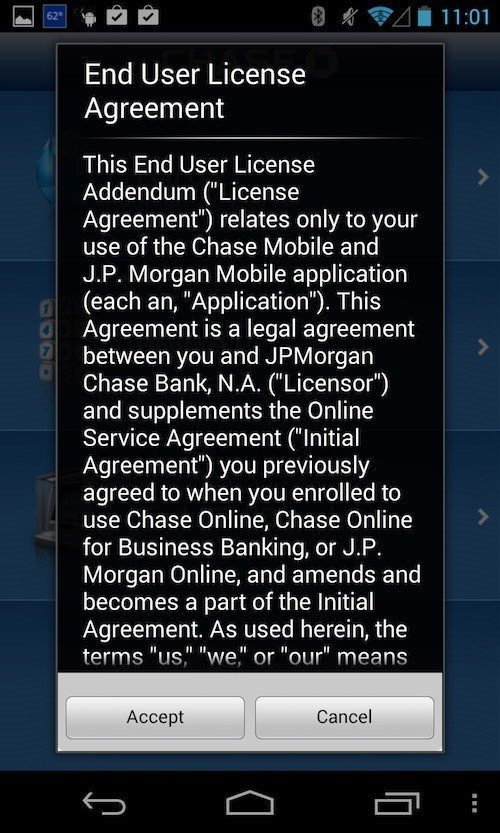
Free Software Licenses do not require acceptance. As mentioned above, they are a notice to the user - not an agreement - and that does not require affirmative asset. Users only need to review the license to be sure they follow the requirements and modify the software appropriately.
Liability
Liability is an element both agreements hold in common. Whether a distributor provides proprietary or free software, they still wish to avoid facing liability.
This is due the risks often associated with all software products. Users are often reliant on them and have high expectations. However, developments like server crashes, unexpected bugs or even hacker attacks can render software useless through no fault of its creators.
That makes limiting liability and disclaiming warranties important for all types of software products. These are often very visible provisions with drafters using bold text or all-caps.
Parallels Software uses a combination of bold headers and all-caps to draw attention to its liability limitations:

It does the same thing with its warranty disclaimer:

The General Public License contains similar provisions and takes the same approach to make them noticeable:

To extend protection users who access and modify open code software, the General Public License allows them to expand on disclaimers and liability limits:

The only difference between these provisions is that the Free Software License offers broader language. That is likely due to the fact that it addresses many products.
While EULAs are designed for a specific product or line of products, the Free Software License intends to include all software offered with open code.
Enforcement
There is a question about whether EULAs are enforceable. There is dispute in the legal field and among consumers regarding whether their terms are fair.
One of these issues arises from unequal dealing power. Courts often consider EULAs adhesion contracts, meaning consumers must accept the terms or find a different software to use. There is no room for negotiation and consumers often have no choice but to accept the agreement.
Since common products like Adobe Acrobat and Microsoft Office do not have many competitors, this was perceived as giving consumers no real choices. Some courts even described this as coercion where software developers took advantage of a consumer's dependence on their products.
However, other courts confirmed EULAs were enforceable as long as they do not contain abusive terms. Clauses limiting forums for disputes and requiring payment are upheld. However, any provisions limiting damages or providing unlimited discretion for termination could face reversal.
With so few challenges against them, there is a potential for EULAs to advance questionable practices. For example, when Sony issued a new EULA concerning its Playstation games, the gaming community was disturbed by terms allowing monitoring and slowing down video content downloads. There were long discussions about being aware of these limitations and perhaps considering a new gaming system if this situation was too uncomfortable.
That controversy arose in 2008 and while there warnings aplenty about these circumstances, the matter never went to court.
Now, in 2018, when people are more accustomed to cookies, social media, and other online processes monitoring their activity, this may not be as controversial as it was 10 years ago.
EULA law is still evolving along with available technology. It is likely that more legal questions will arise about enforcing these agreements.
Free Software Licenses have not faced much legal scrutiny. While there have been minor disputes between developers and users, none of these questioned the enforcement of the license. Usually these ended by finding better ways to define terms.
There have also been other license forms introduced to replace or expand on the General Public License. These include the Apple Public Source License and various terms introduced by Derbian. Once again, all that arose was discussion of the terms and how to define them consistently--not ever questioning enforcement of the agreement. Now these agreements coexist and users are allowed to choose whichever one suits their modifying of the product the best.
Licensing agreements are essential to protect any rights you hold in your software product and inform consumers. Even if you offer an open source product that allows user modification, you still need to refer to an open source license so users receive proper notice.
Basically, understand that these licensing agreements are not interchangeable because proprietary and open source software face different issues and legal needs. Use the correct license for your software so you can distribute your product on stronger legal ground.

Comprehensive compliance starts with a Privacy Policy.
Comply with the law with our agreements, policies, and consent banners. Everything is included.
